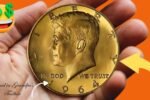Lincoln Wheat Penny : The internet is buzzing with sensational headlines about rare coins fetching astronomical prices—and one question keeps popping up: Could your Lincoln Wheat Penny be worth $1 billion? It’s an exciting thought, but before you quit your day job, let’s separate fact from fiction.
What Is a Lincoln Wheat Penny?
The Lincoln Wheat Penny was minted from 1909 to 1958 and features President Abraham Lincoln on the obverse (front) and two stalks of wheat on the reverse (back). Designed by Victor D. Brenner, it was the first U.S. coin to feature a real person and remains a favorite among collectors.
The Myth of the $1 Billion Penny
Let’s address the elephant in the room: No Lincoln Wheat Penny has ever sold for $1 billion. The most valuable penny known is a 1943-D Bronze Cent, which sold for around $1.7 million at auction—not billion. So where does the billion-dollar figure come from?
Most likely, it’s a result of viral exaggeration or clickbait headlines meant to drive traffic. While some Lincoln Wheat Pennies are incredibly valuable, none come close to reaching a billion-dollar valuation.
Which Lincoln Wheat Pennies Are Valuable?
Although not worth a billion, certain Wheat Pennies can still be worth thousands—or even over a million—in the right condition. Here are a few to look out for:
-
1909-S VDB: The first-year issue with the designer’s initials on the reverse. Value can range from a few hundred to over $3,000, depending on condition.
-
1914-D: Rare and often faked. High-grade specimens can fetch over $10,000.
-
1922 “No D”: Produced at the Denver Mint, but missing the “D” mintmark. A collector’s gem worth several thousand dollars.
-
1943 Bronze Cent: Most 1943 pennies were made of steel due to WWII copper shortages. A copper version is a major rarity, valued up to $1.7 million.
-
1955 Doubled Die: Features a dramatic doubling of the date and inscriptions. Worth hundreds to thousands.
How to Tell if Your Penny Is Valuable
-
Check the Date and Mintmark: Certain years and mintmarks are far rarer.
-
Look for Errors: Misstrikes, double dies, and other minting errors can drastically raise a coin’s value.
-
Assess Condition: Coins in “mint state” or uncirculated condition are worth significantly more.
-
Get It Appraised: For potential big-ticket finds, consult a reputable coin dealer or submit the coin to a professional grading service like PCGS or NGC.
The Bottom Line
While it’s fun to imagine a humble penny being worth a billion dollars, the reality is less fantastical but still exciting. Rare Lincoln Wheat Pennies can command high prices and are highly collectible—but they won’t buy you a private island just yet.
So, before you toss that old penny in a change jar, take a closer look. It may not make you a billionaire—but it might just make your day.
Pro Tip: If you find a 1943 penny that sticks to a magnet, it’s steel and worth only a few cents. If it doesn’t stick, get it checked immediately—it could be a rare copper version worth a fortune.
Frequently Asked Questions (FAQs…)
Q1: Can a Lincoln Wheat Penny really be worth $1 billion?
A: No. Despite viral claims and clickbait headlines, no Lincoln Wheat Penny has ever been valued at $1 billion. The most valuable known Wheat Penny sold for around $1.7 million.
Q2: Why do some people think a Lincoln Penny is worth that much?
A: Misleading articles, social media rumors, and exaggerated online listings can give the false impression that common coins are worth staggering amounts. Always verify information through reputable numismatic sources.
Q3: What’s the most valuable Lincoln Wheat Penny ever sold?
A: The 1943-D Bronze Cent holds the record, having sold for up to $1.7 million. It’s extremely rare due to a minting error during World War II.




